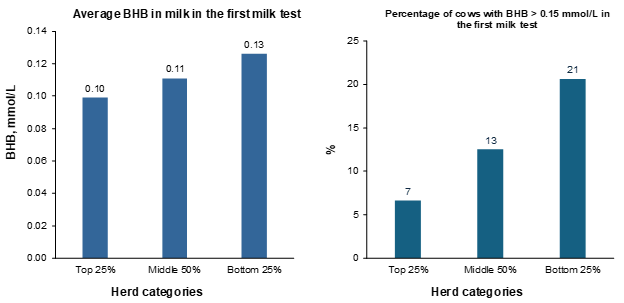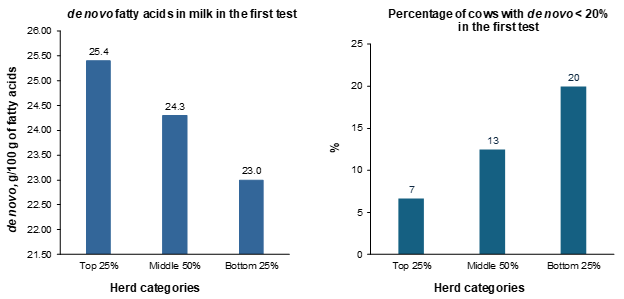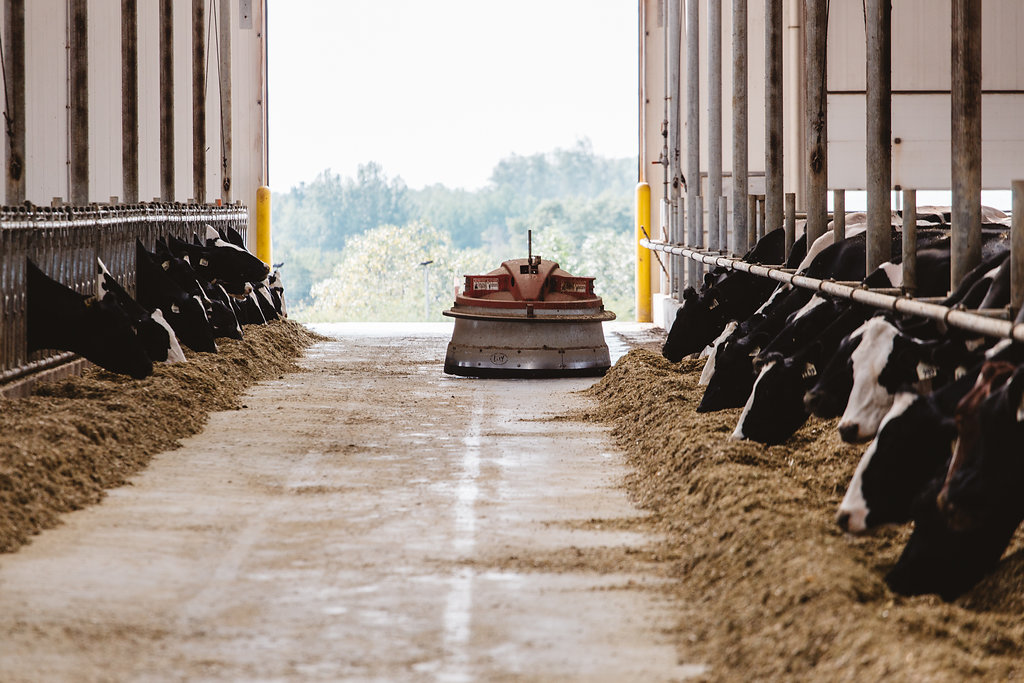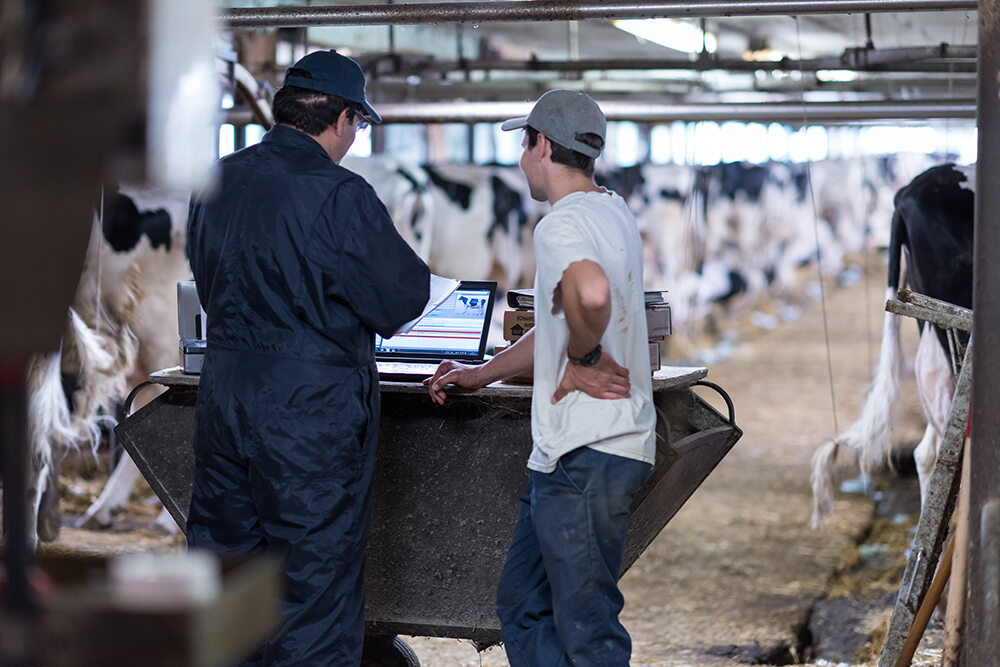Optimizing transition period management: insights from milk testing and 2023 benchmarks
- 29, January 2024
The transition period is a critical phase for cows, presenting numerous challenges that can impact overall herd health and productivity. We recently explored these challenges and their potential consequences. The results of the first milk test can serve as a valuable tool for monitoring and assessing the transition period management.
Using benchmarks for herd evaluation is a good resource to assess performance and promote increased productivity and sustainability in dairy production. It provides a data-driven approach to assess management practices, allowing farmers and their advisors to make informed decisions and adapt their practices to achieve better outcomes for the herd.
In this article, we delve into the 2023 12-month herd averages for somatic cell count (SCC), beta-hydroxybutyrate (BHB), and de novo fatty acids in the first milk test conducted across 5,611 Holstein herds in Canada. For each parameter of interest, herds are classified into three categories: the top 25%, representing those with the best averages; the middle 50%, encompassing herds falling between the 25% and 75% quartiles; and the bottom 25%, comprising the herds with the highest opportunity for improvement. These values can be used as benchmarks to assess your transition period management practices.
Somatic Cell Count (SCC) in the first milk test
Monitoring SCC proves to be a valuable tool for assessing udder health. At the first milk test, an elevated SCC could indicate new infections during the dry period or in the first weeks of lactation; or failure to cure infections from the past lactation. The SCC ceiling is at 200,000 cells/ mL, and surpassing this threshold is associated with milk production losses.
The top 25% of herds in Canada had an average of 115,000 cells/mL in the first test, while the bottom 25% had a higher average, nearly 2.4 times greater, at 272,000 cells/mL. Among the top 25% of the herds, only 10% of the cows exceed the SCC threshold of 200,000 cells/mL. Conversely, in the bottom 25% of the herds, this prevalence was twice as high, reaching 20%.

Beta-Hydroxybutyrate on the First Milk Test
During the transition period, there is an increase in the energy requirements to support milk production. At the same time, dairy cows have a reduction in feed intake in the final stage of gestation and it takes a couple of weeks for the intake to recover. For this reason, most dairy cows present a negative energy balance, leading to the mobilization of fat reserves and an increased concentration of BHB in both blood and milk. While lower levels of BHB are not a concern, elevated BHB indicates subclinical ketosis and is associated with impairment in milk production, fertility, and higher chances of culling.
The top 25% of herds in Canada had an average BHB concentration in milk of 0.10 mmol/L in the first test, while the bottom 25% of the herds had an average of 0.13 mmol/L. For the top 25% of herds, only 7% of the cows had a BHB concentration >0.15 mmol/L (which is an indicator for subclinical ketosis) in the first test, while in the bottom 25% of the herds, this prevalence was three times higher, at 21%. However, it’s crucial to note that BHB remains elevated for only a couple of days. Given that milk testing occurs every 5 to 6 weeks, there is a window where cows with elevated BHB levels may go undetected in the tests. Consequently, we estimate that the true prevalence is likely 2.5 to 3 times higher than what the test reveals.

De novo fatty acids in the first milk test
Rumen health is a concern during the transition period due to the reduction in intake around calving, exposure to different diets (prepartum diets, fresh cow, and lactating cow diets…), and social stress due to frequent pen changes. Milk composition proves to be a valuable tool to assess rumen function during the transition period. Although we look at butterfat as only one component, butterfat is composed of different types of fatty acids and distinct proportions of these groups can serve as indicators of different factors. De novo fatty acids are produced in the mammary gland using compounds from the ruminal fermentation and therefore are a good indicator of rumen function.
Milk fatty acid profile is available in Quebec and New Brunswick. Our analysis of this data on 2,921 Holstein herds showed that concentrations of de novo fatty acids in the first milk test higher than 20% are associated with better reproductive performance and a reduced risk of culling. The 2023 12-month average from 2,820 herds in Quebec showed that the top 25% of the herds have an average of 25.4 g of de novo/100 g of fatty acids, while the bottom 25% of herds have an average of 23.0 g of de novo/100 g of fatty acids. Only 7% of cows in the top 25% of herds had a low de novo proportion in milk, compared to 20% in the bottom 25% of the herds.

Final remarks
In conclusion, the results of the first milk test are a good tool to assess the transition period management. Utilizing benchmarks not only facilitates the assessment of herd performance but also contributes to defining goals and strategies. Elevated SCC and BHB levels indicate potential issues, while de novo fatty acids offer insights into rumen health. Strategic management, informed by these findings, is essential for fostering optimal health, productivity, and sustainability in dairy herds.










